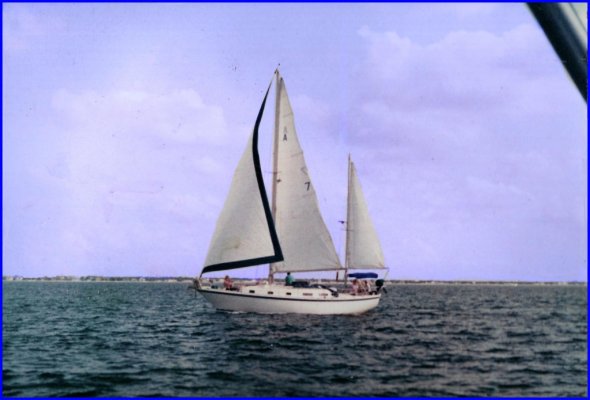waterhawk wrote:
I'm just leary of fiberglass;* ....Anyway,, my impression, from PURE reading (no experience with Sea/Ocean crossing performance), was that the thought was fiberglass is cool as long as you are close enough to get help,....
*Steel can be far more of a hassle than fiberglass.* Steel boats rust, not so much from the outside in but from the inside out.* I have good friends who had a steel boat and they spent a hell of a lot of time making sure the bilges--- which were not all that easy to get at--- were bone dry all the time.
The best (arguably) production powerboat for world cruising is the Nordhavn.* They have been taken around the world, across the Atlantic to the Med, into the western Pacific from the US west coast, etc., etc., etc.* Nordhavn's are fiberglass.* It's my opinon that working boats and many commercial fish boats are steel (or aluminum) because these materials will take more*of a beating from the work being done with them, not because metal hulls are automatically*more seaworthy or long-lived.
As to circumnavigating (or even just crossing an ocean one way) with a powerboat, one of the determining factors is fuel capacity and fuel usage. Nordhavns are displacement hull, single engine boats.* And the engines tend toward Eric Henning's formula as being not much more powerful than is needed to move the hull at or near displacement speed plus a reasonable reserve.* This enables them to cruise very long distances on the fuel that can be carried in the tanks.* Also many Nordhavn's have get-home engines, a separate small diesel that powers it's own shaft and small prop.
A production "trawler" of the type most of us have, be it a GB, Carver, CHB, Island Gypsy, Calfornian, etc. is a coastal design, be it a single or twin engine boat.* They may be fine for shorter, open ocean runs to Catalina or out to the Florida Keys or even the Bahamas if the weather is really cooperative.* But they are not suited for long-distance open ocean work.* They don't have anywhere near the range, their hulls are not as stable as one would like, they have big windows that will shatter under the impact of green water if the weather and waves kick up, etc.
If one's true goal is long-distance, open-ocean cruising and if one cannot afford the purchase, care* and*feeding cost of a Nordhavn (or the equivelant) the only realistic choice is a sailboat, although it, too, needs to be designed for this kind of sailing.
And as an earlier poster said, ocean-crossing or circumnavitation is not as much about the boat (although you still need one capable of surviving the conditions likely to be encountered and reliable enough to keep running for the duration), but is more about the boat's driver.

